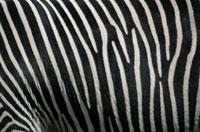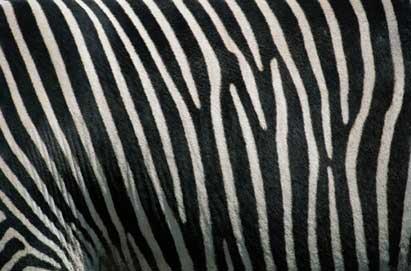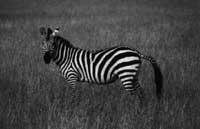Eye-catching dress to deceive the enemy
2001/12/02 Mendiburu, Joana - Elhuyar Zientziaren Komunikazioa
In the animal and plant world you can find two types of "dresses", of colors that harmonize with the environment and hide the animal or plant, or that contrast with the environment. The first obviously have the function of protecting the animal. The latter announce that the animal is poisonous or at least bad taste.

There is no shortage of examples to illustrate these strategies. It is one of the animals dressed in disguise, as the octopus that has been released recently. They inhabit the Pacific seabed of the Indian Ocean and several species appear to exist. In normal conditions they present longer tentacles and white-red stripes than the body, but when they observe that there is some predator around, they can stretch the limbs, flatten the body, change color and use many other tricks to shape other animals and confuse the enemy. In addition, it must be recognized that in this task they are true specialists. According to the predators that circulate in the area, they imitate some animal: big crab, sea snakes, sea anemones, jellyfish, etc.
The Monarka butterfly is an example of the second strategy. The larvae of this butterfly contain a poisonous sclerosis plant, which in turn absorbs poison. Thus, the butterfly does not become poisonous, but after eating leaves a disgusting taste in the mouth.
It is usually not difficult to know which strategy the animal or plant has bet, but the case of zebras is curious. Biologists have long wondered about the concrete function of zebra dress. And they continue to do so because they have not reached a full agreement.
Identification Theory

According to the identification theory, the main function of zebra dress is identification. According to this theory, although at first glance all the zebras seem the same, the dress of each zebra is unique. That is, the two zebras will never have the same stripes. This fact is very important because it seems that children identify their mother with stripes. To the zebra jet the first dress she sees is engraved for life, so the male not only protects the female from zebra that gives birth to predators. She also drives away the females who could move around the area, as if the first dress she will see outside her mother. If not, as his mother can follow him in a zebra that ignores him and then the probability of dying is very high.
Carefree the predator
Other theories argue that, although the dress of the zebras is very striking, the predator is very effective for the trumpet. Apparently, having so many stripes breaks with the appearance or silhouette of the animal and predators find it more difficult to distinguish where each zebra or part of the body of the zebra begins and ends. The profile of the animal is more difficult to define, so it is more difficult to hunt. This theory can be considered valid, especially considering that the distribution and direction of the lines are perpendicular to the return of the body.

For others, thanks to these lines, the predator mixes the zebras with the grass around them. Keep in mind that many predators see it in black and white, so the stripes of the zebra and the grass around them will look like similar colors. Also, zebras usually go in a group, but when approaching the predator they start to run in different directions. Thus, the predator is fascinated by the mixture of black and white stripes, inseparable. Not all biologists agree with this theory, but it is also true that predators try to break groups to see if there are children or not and, at the same time, find it easier to catch the strands that are left alone.
Other theories
Some biologists who disagree with any of these theories and who, however, have wanted to give an explanation claim that black and white dress could be related to temperature, as black absorbs heat and white reflects heat.

According to English biologist Jeffrey Waage, the dress could be protection against the tse-tse fly. In fact, the tse-tse fly does not drive with smell, but with sight, so the wrapped dress leaves the fly bankrupt. It seems that sleep disease contaminated by the tse-tse fly in areas where the zebras live is not widespread.
However, the most sensible thing about ignorance is to think that the dress can perform several functions. It is very possible that the dress is the identifier of each individual within the species and that, for other species, it is confusing. In any case, there is no doubt that the uniqueness that has given the approval to evolution makes this effective, right?
Published in 7k.

Gai honi buruzko eduki gehiago
Elhuyarrek garatutako teknologia





